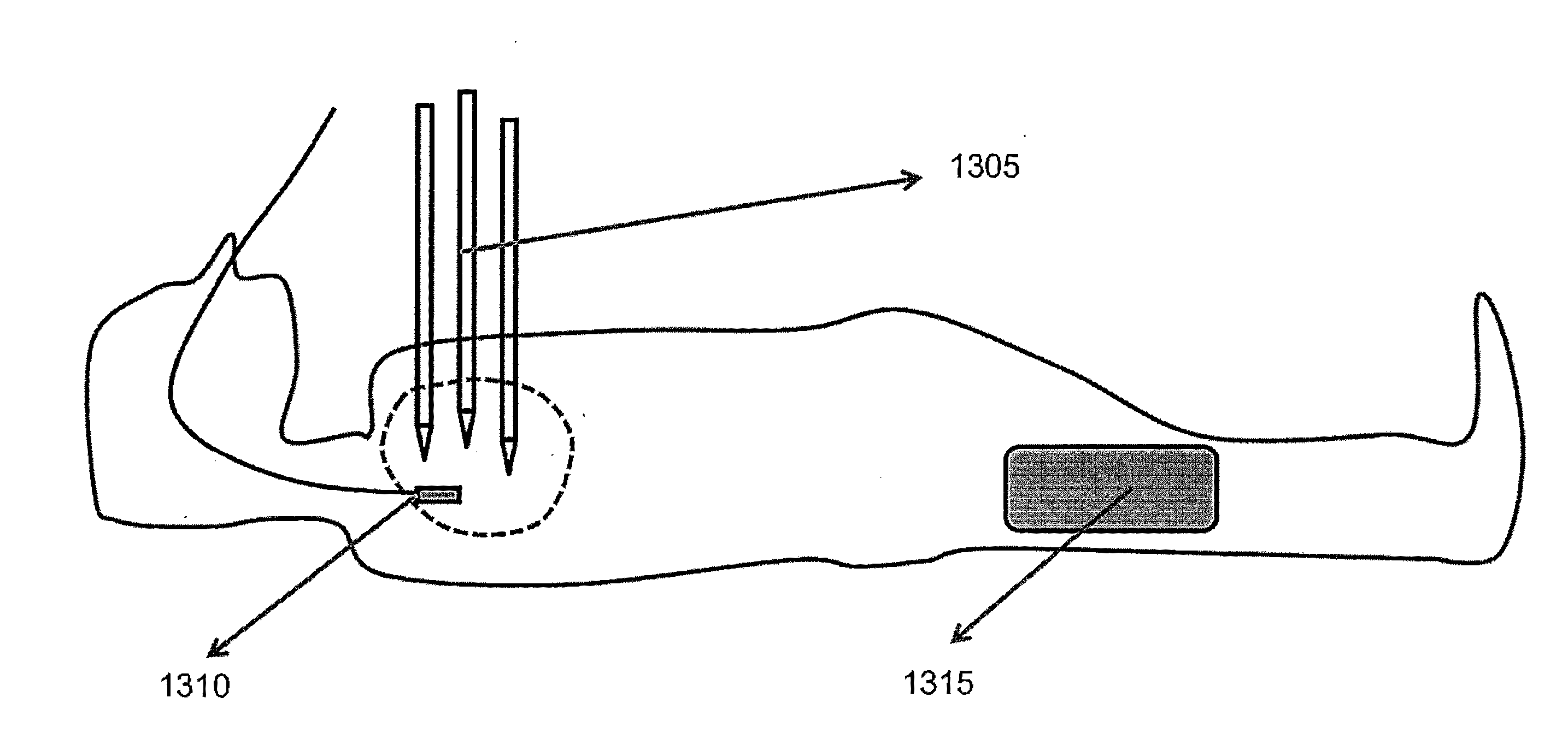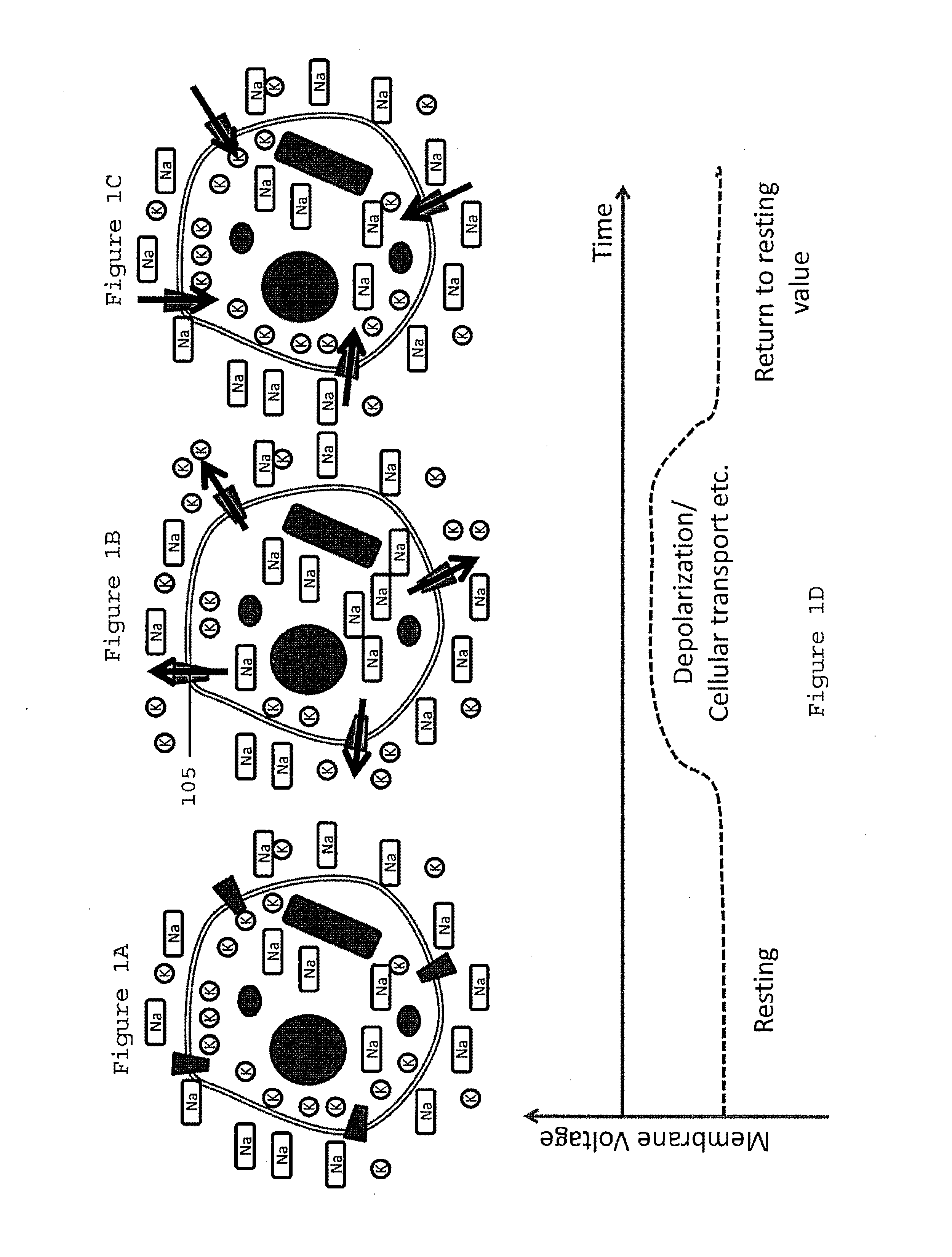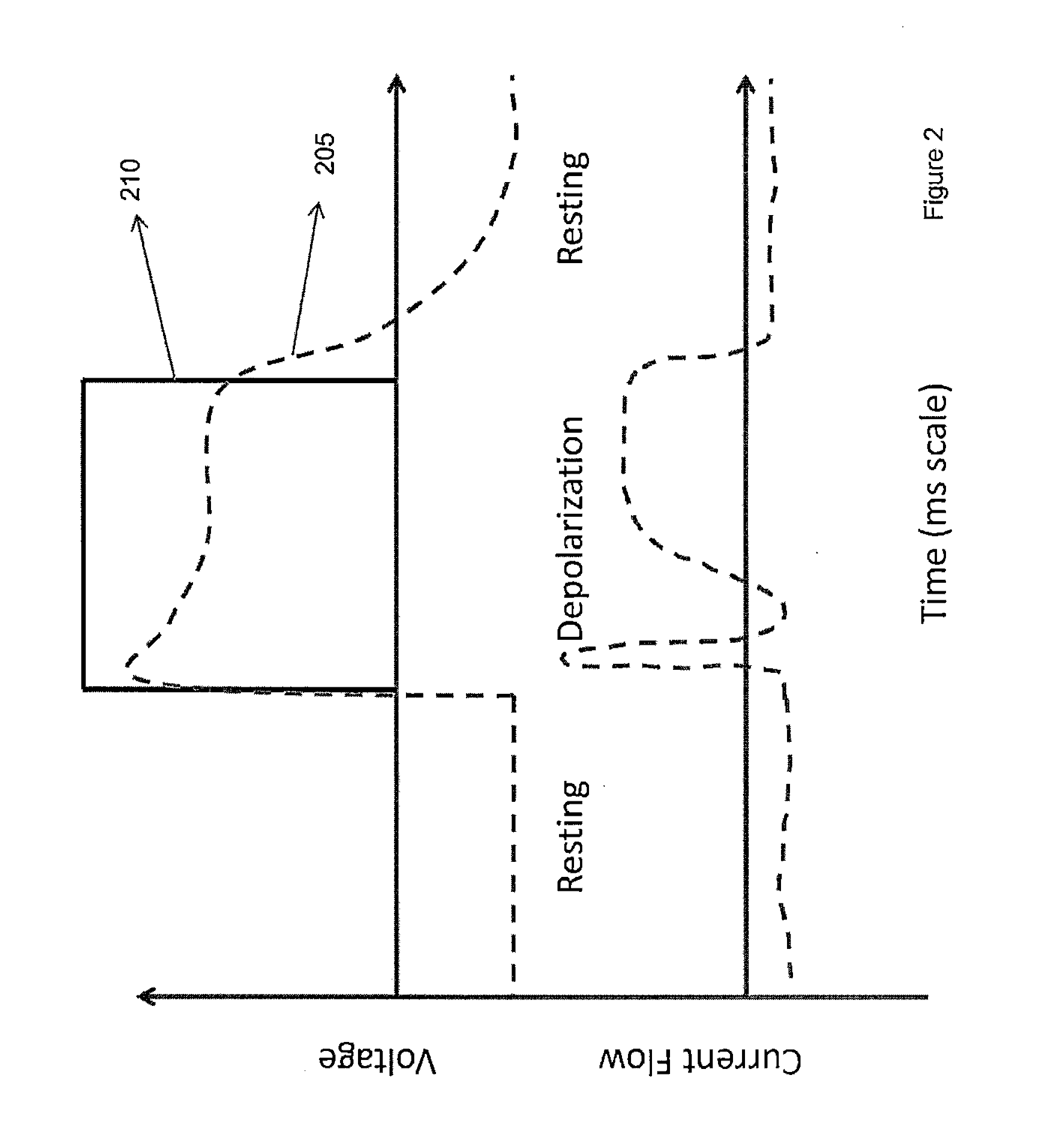System, method and computer-accessible medium for in-vivo tissue ablation and/or damage
a tissue ablation and in-vivo technology, applied in the field of systems, methods and computer-accessible mediums for in-vivo tissue ablation, can solve the problems of ionic imbalance, cell death, cell inability to recover from this process, etc., and achieve the effect of preventing or reducing the electroporation of a majority of the tissue(s), increasing the impedance level, and stabilizing the impedance level of the tissue(s)
- Summary
- Abstract
- Description
- Claims
- Application Information
AI Technical Summary
Benefits of technology
Problems solved by technology
Method used
Image
Examples
Embodiment Construction
[0015]Systems, methods and computer-accessible mediums can be provided that can establish particular parameters for electric pulses based on a characteristic(s) of the tissue(s), and control an application of the electric pulses to tissue(s) for a plurality of automatically controlled and separated time periods to ablate the tissue(s) such that an electroporation of a majority of the tissue(s) is prevented or reduced. The electric pulses can include a waveform(s). The waveform can be based on a (i) an applied voltage of the electric pulses, (ii) a sign of the electric pulses, (iii) a length of exposure of the tissue(s) to the electric pulses, (iv) a relative field strength of the electric pulses, (v) a current density of the electric pulses, or (vi) a duty cycle of the electric pulses. The waveform(s) can have a shape of (i) a square, (ii) a sawtooth, (iii) a triangle, (iv) a trapezoid or (v) an exponential sinusoidal pulse. The waveform can be applied as (i) monopolar, (ii) bipolar...
PUM
 Login to View More
Login to View More Abstract
Description
Claims
Application Information
 Login to View More
Login to View More - R&D
- Intellectual Property
- Life Sciences
- Materials
- Tech Scout
- Unparalleled Data Quality
- Higher Quality Content
- 60% Fewer Hallucinations
Browse by: Latest US Patents, China's latest patents, Technical Efficacy Thesaurus, Application Domain, Technology Topic, Popular Technical Reports.
© 2025 PatSnap. All rights reserved.Legal|Privacy policy|Modern Slavery Act Transparency Statement|Sitemap|About US| Contact US: help@patsnap.com



